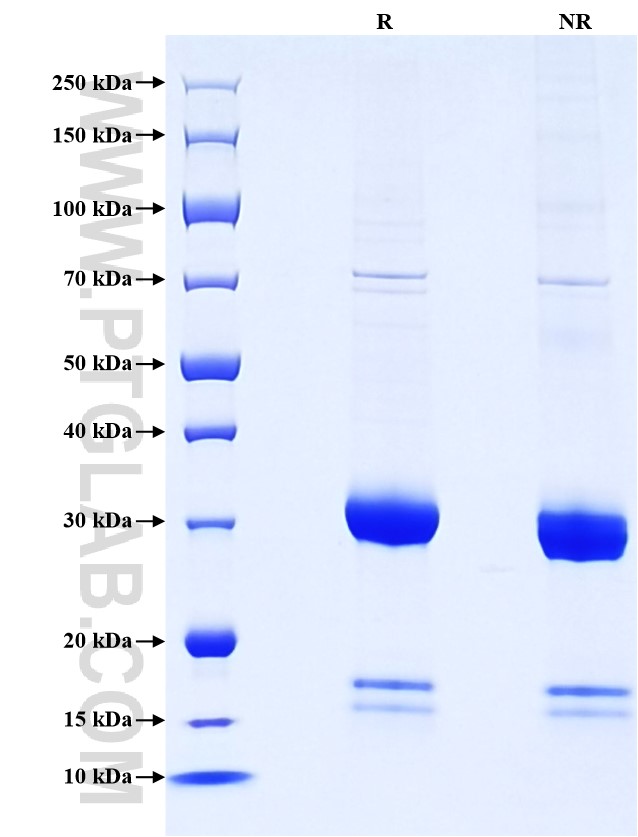Recombinant Mouse IGFBP2 protein (His Tag)
种属
Mouse
纯度
>90 %, SDS-PAGE
标签
His Tag
生物活性
未测试
验证数据展示
产品信息
| 纯度 | >90 %, SDS-PAGE |
| 内毒素 | <0.1 EU/μg protein, LAL method |
| 生物活性 |
Not tested |
| 来源 | HEK293-derived Mouse IGFBP2 protein Glu35-Gln305 (Accession# P47877) with a His tag at the C-terminus. |
| 基因ID | 16008 |
| 蛋白编号 | P47877 |
| 预测分子量 | 30.6 kDa |
| SDS-PAGE | 28-33 kDa, reducing (R) conditions |
| 组分 | Lyophilized from 0.22 μm filtered solution in PBS, pH 7.4. Normally 5% trehalose and 5% mannitol are added as protectants before lyophilization. |
| 复溶 | Briefly centrifuge the tube before opening. Reconstitute at 0.1-0.5 mg/mL in sterile water. |
| 储存条件 |
It is recommended that the protein be aliquoted for optimal storage. Avoid repeated freeze-thaw cycles.
|
| 运输条件 | The product is shipped at ambient temperature. Upon receipt, store it immediately at the recommended temperature. |
背景信息
IGFBP2 is one of six homologous proteins in the IGFBP family. Based on its ability to bind IGFs with high affinity, IGFBP2 can exert its functions by interacting with IGFs in the circulation to control the function and activity of IGFs, and prevent the interaction between IGFs and IGF receptors.IGFBP2 was found to be highly expressed in many cancers, including glioma, lung cancer, colorectal cancer, ovarian cancer (OC), rhabdomyosarcoma, gastric cancer, breast cancer, bladder cancer, prostate cancer, endometrial cancer, penile squamous cell carcinoma, and hepatocellular carcinoma.
参考文献:
1. Perez-Larraya JG. et al. (2014). Cancer.120(24):3972-3980. 2.Yuan Q.et al. (2019). Biosci Rep. 39(6):387-395. 3. Han S.et al. (2014). PLoS One. 9(4):e93791. 4. Lin Y.et al. (2009). Neuro Oncol. 11(5):468-476 5.Guo C.et al. (2013). PLoS One. 8(9):202-206.


